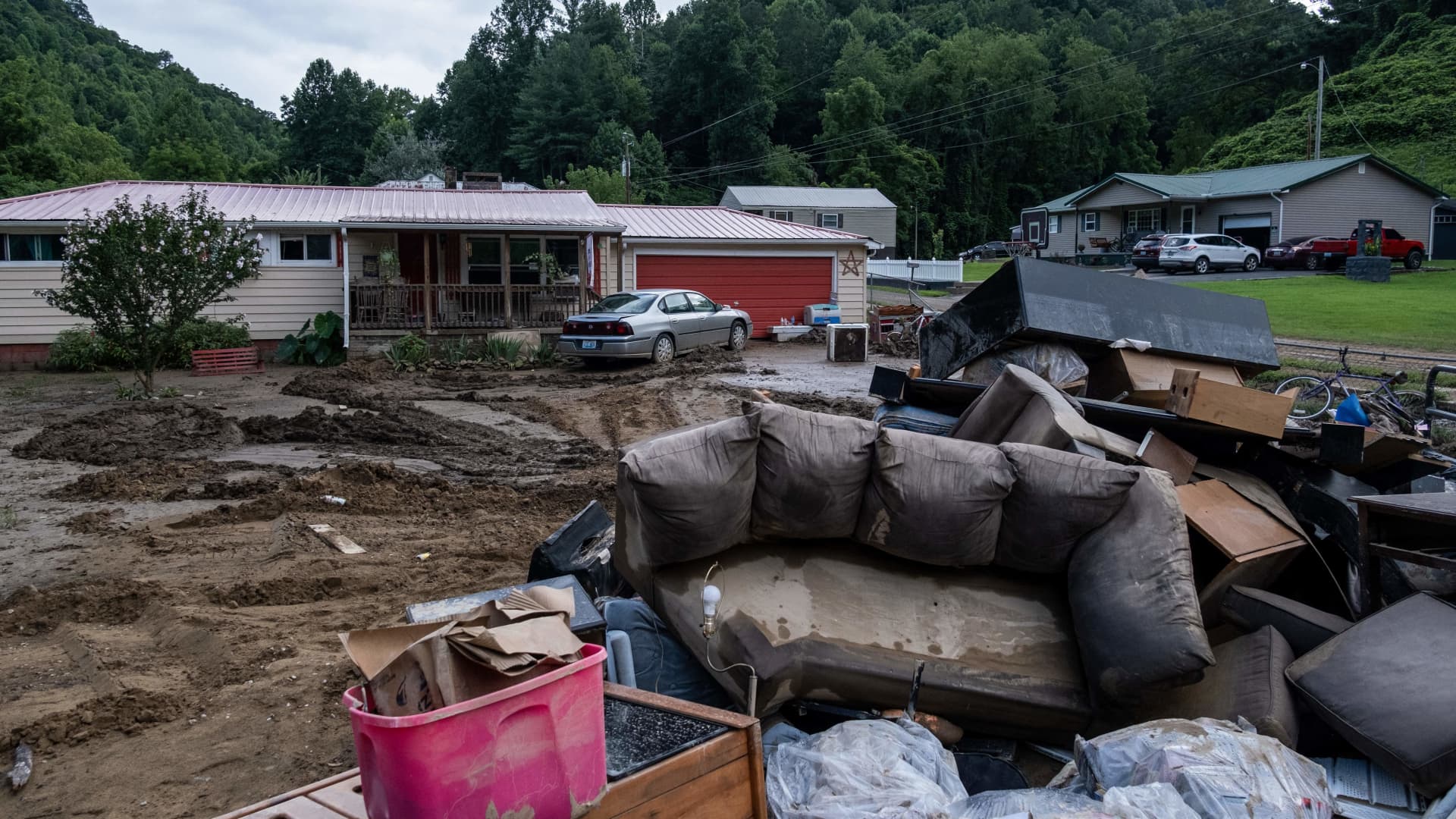As climate change threatens the U.S. with more natural disasters, it’s becoming increasingly costly for Americans to insure their homes — and it’s only expected to get worse, according to experts.
“These things are occurring more often, and they’re causing more damage,” said Jeremy Porter, chief research officer at First Street Foundation, a non-profit focused on defining U.S. climate risk.
Indeed, there were 20 separate billion-dollar U.S. natural disasters in 2021 — including a deep freeze, wildfires, flooding, tornado outbreaks and other severe weather — costing a total of $145 billion, according to the National Oceanic and Atmospheric Administration.
More from Personal Finance:
5 cities have highest rent but cheaper ones have hidden costs
This can save homebuyers up to $104,000 over mortgage life
The Fed is fighting inflation. So is remote work
The uptick in costly climate events, combined with rising costs to rebuild, labor shortages and “demand surges” after natural disasters have triggered higher homeowners insurance premiums, experts say.
“We’re seeing drastic increases,” said Pat Howard, managing editor and licensed home insurance expert at Policygenius.
Some 90% of U.S. homeowners saw premiums jump from May 2021 to May 2022, costing an average of $134 more per year, according to a Policygenius report.
The average increase is 12.1% nationwide, compared to one year ago, but surges have been higher in disaster-prone states like Arkansas, Washington and Colorado, the report found.
Some homeowners have hidden flood risks
Brad Wright, a certified financial planner and managing partner of Launch Financial Planning in Andover, Massachusetts, said erosion and rising sea levels are growing concerns for clients interested in coastal properties.
When someone considers buying a home along the beaches of southern Maine, for example, there are always questions about flood risks and the cost of insuring the property. Depending on the answers, they may choose another home.
Still, owners may unknowingly purchase or own in flood-prone areas. While the Federal Emergency Management Agency identified 8 million properties at risk for 1-in-100-year flooding, First Street Foundation found nearly double the amount in a 2020 report.
These family houses have been around forever, and they may not have a mortgage, so flood insurance may not be required.Brad WrightManaging partner of Launch Financial Planning
Standard homeowners insurance policies don’t cover flooding, but protection is available through FEMA or private coverage, which may be required by mortgage lenders. While the average yearly premium is $985, according to ValuePenguin, experts say the cost may be significantly greater in high-risk areas.
Last October, FEMA revamped its program to more accurately assess flood risk, causing insurance premiums for some coastal properties to rise to $4,000 or $5,000 annually, up from just $700 or $800, Porter from First Street Foundation said.
These hikes may be prohibitively expensive for lower-income families or retirees, especially those who may be living in a property inherited from family, Wright said.
“These family houses have been around forever, and they may not have a mortgage, so flood insurance may not be required,” he said. “But they should have it anyway.”
Wildfire risk may be costly to insure
Although wildfires are covered as part of the standard homeowners insurance coverage, policy premiums in fire-prone areas have also become more costly, according to Michael Barry, chief communications officer at the Insurance Information Institute.
“The home insurer is looking to price the policy to reflect the risk,” he said.
For example, premiums rose by nearly 10% in California from May 2021 to May 2022, according to Policygenius, with the increase in costly wildfires partially to blame.
If you move into an area that’s prone to wildfires or flooding, that cost goes up dramatically because the carrier is passing that on to the consumer.Bill ParrottPresident and CEO of Parrott Wealth Management
Bill Parrott, an Austin, Texas-based CFP, president and CEO of Parrott Wealth Management, has also seen rising premiums in high-risk regions.
“If you move into an area that’s prone to wildfires or flooding, that cost goes up dramatically because the carrier is passing that on to the consumer,” he said. “That’s a big expense for a lot of people.”
Nationwide, at least 10 million properties may have “major” and “extreme” wildfire risk, according to First Street Foundation.
How to reduce premiums in high-risk areas
Regardless of where you live, it’s critical to do your homework before purchasing a property, suggests Barry of the Insurance Information Institute.
Before making an offer, you can use free tools like ClimateCheck or Risk Factor to measure long-term climate risk for a specific property.
Current homeowners may ask their insurance provider about discounts for taking steps to mitigate possible damage from climate events, such as storm-proofing your home, said Howard from PolicyGenius.
You may also save money by shopping around and bundling home and auto policies. Homeowners insurance is no longer a “set-it-and-forget-it” type of thing, he said.
And if you have sufficient emergency savings, you may consider lowering your premiums by increasing your deductible, Howard said.
